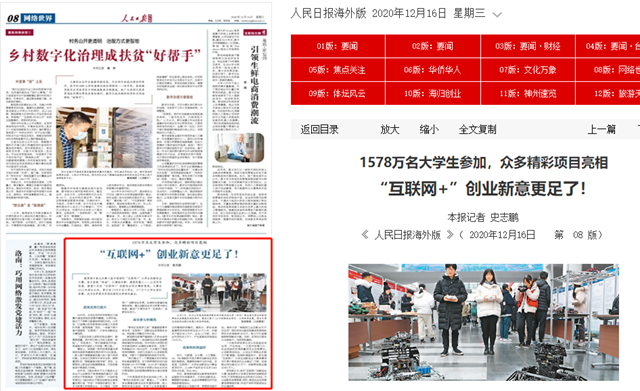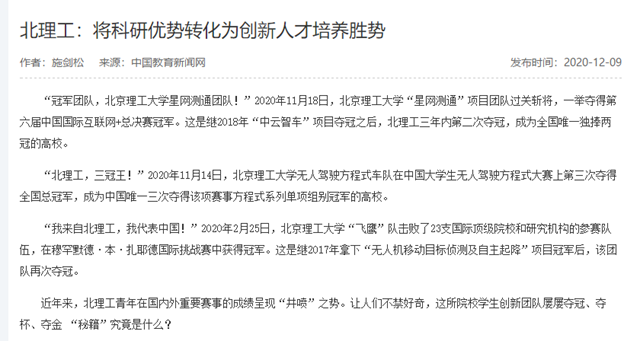【中国国际电视台】报道美国发射货运飞船
发布日期:2017-06-05 供稿:中国国际电视台 编辑:马赛男 审核:王征 阅读次数:
US space firm SpaceX on Saturday launched supplies to the International Space Station (ISS), including an experiment device from Chinese university the Beijing Institute of Technology that will test the effects of space environments on DNA.
The 3.5-kilogram device carried among the cargo will seek to find if space radiation and microgravity cause mutations among antibody-encoding genes and how it happens.
The Chinese payload was first reported in 2015, when an agreement was reached with NanoRacks, a Houston-based company that offers services for the commercial utilization of the ISS.
Under the agreement, NanoRacks will deliver the device, which is independently designed and built by Chinese scientists, to the US side of the space station and astronauts there will conduct studies using the device in about two weeks, sending data back to the Chinese researchers.
Watch CGTN's video on the Chinese experiment below:
NASA spokesperson Kathryn Hambleton confirmed there was a Chinese experiment device launched on this mission, known as SpaceX CRS-11.
Although a US law known as the Wolf amendment bans cooperation between NASA and Chinese government entities, this deal is purely commercial and therefore considered legal.
"NASA complied with all legal requirements to notify the Congress of this activity, and all of the ISS partners approved the inclusion of the experiment," Hambleton said in an email.
The SpaceX Falcon 9 first stage booster is seen as it lands shortly after launching the Dragon spacecraft from pad 39A at NASA’s Kennedy Space Center in Cape Canaveral, Florida, Saturday, June 3, 2017. /AFP Photo
The SpaceX Dragon cargo spacecraft lifted off on the company's Falcon 9 rocket at 5:07 p.m. EDT (2107 GMT) on Saturday from the Kennedy Space Center in Florida.
About 10 minutes later, the rocket's first stage made a successful landing at SpaceX's Landing Zone 1, just south of the launch site at Cape Canaveral Air Force Station.
On this trip, the Dragon will deliver almost 2,700 kilograms of supplies for astronauts living in the space station, including solar panels, tools for Earth-observation and equipment to study neutron stars.
SpaceX向空间站发射了中国的实验设备和其他补给品
上周六,美国太空探索技术公司SpaceX向国际空间站(ISS)发射了补给品,其中包括了中国北京理工大学的实验装置,这套装置将测试空间环境对DNA的影响。
这套3.5千克的设备装载了在货物上,将探索空间辐射和微重力是否会导致抗体编码基因之间的突变,以及如何导致抗体编码基因之间的突变。
2015年,媒体首次报道了中国的有效载荷。中国当时与位于休斯敦的公司NanoRacks达成协议,该公司将为国际空间站的商业用途提供服务。
根据协议,NanoRacks会把由中国科学家独立设计和建造的设备提供给美国空间站,美国方面的宇航员将在两周内进行研究,并将数据发回给中国研究人员。
观看以下由中国国际电视台(GNTV)关于中国实验的报导:
美国国家航空航天局(NASA)发言人凯瑟琳·哈姆伯顿(Kathryn Hambleton)已证实此次发射任务将有一个中国的实验装置,被称为SpaceX CRS-11。
虽然被称为“狼”修正案的美国法律禁止美国国家航空航天局与中国政府机构进行合作,但由于这项交易纯粹是商业性的,因此被美国视为合法。
“NASA在遵守所有法律要求的前提下向国会告知这了一活动,并且已经取得了所有国际空间站合作伙伴的批准,”哈姆伯顿在一封电子邮件中说到。
2017年6月3日星期六,龙飞船从佛罗里达州卡纳维拉尔角的美国国家航空航天局肯尼迪航天中心39A号发射。不久后,SpaceX公司“猎鹰9号”火箭第一级助推器被视为已登陆。(法新社拍摄)
在星期六(美国东部时间)(2107 GMT)下午5点07分,从美国佛罗里达州肯尼迪航天中心发射的SpaceX 龙货运飞船与公司的“猎鹰9号”火箭剥离。
大约10分钟后,火箭的一级助推器在SpaceX的着陆区1登陆成功,着陆区就在卡纳维拉尔角空军基地的发射场的南边。
在这次旅行中,龙飞船将为空间站的宇航员提供近二千七百公斤的补给品,包括太阳能电池板,地球观测工具和研究中子星的设备等。
分享到:

